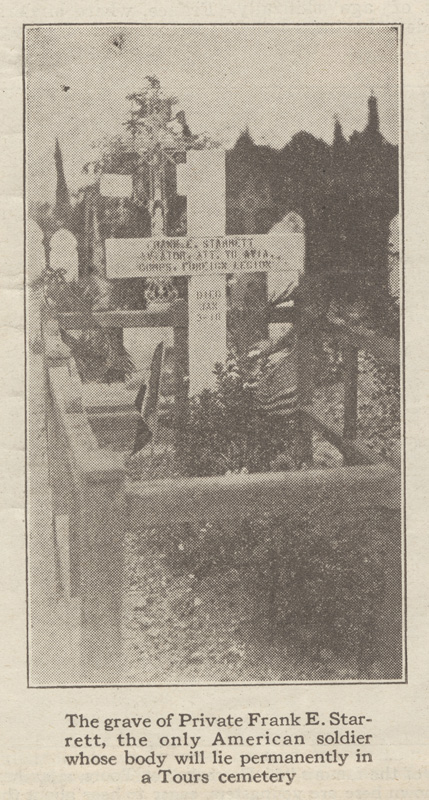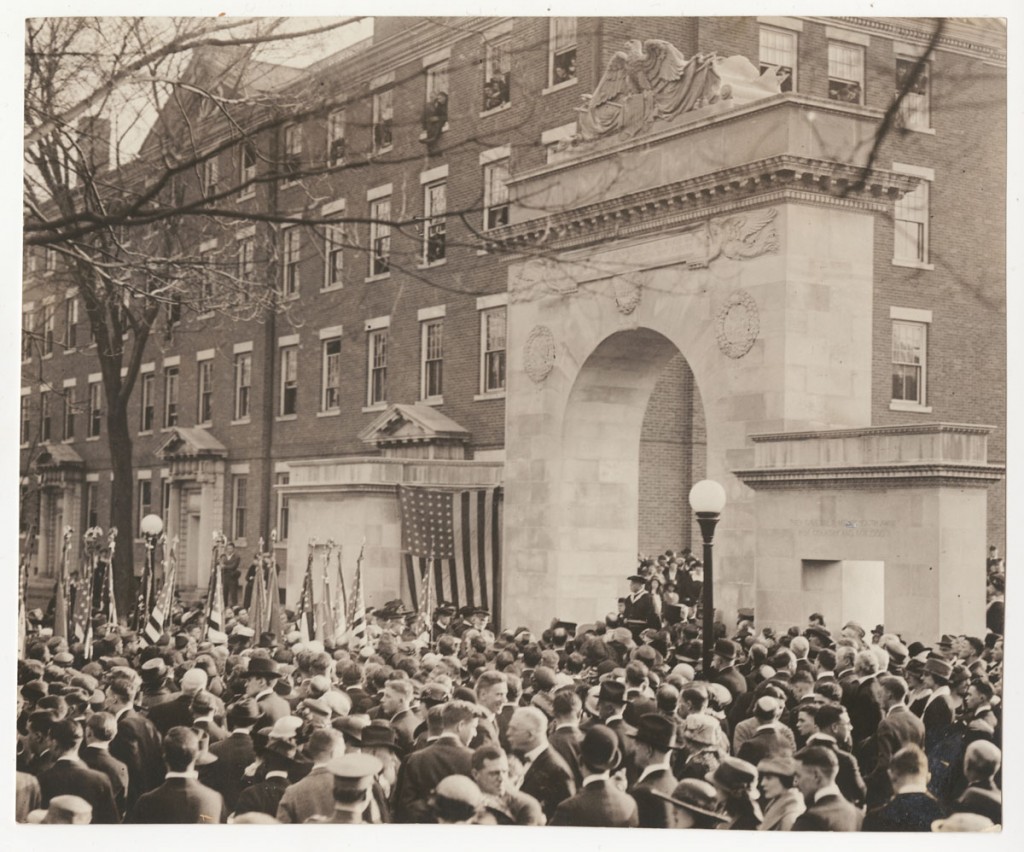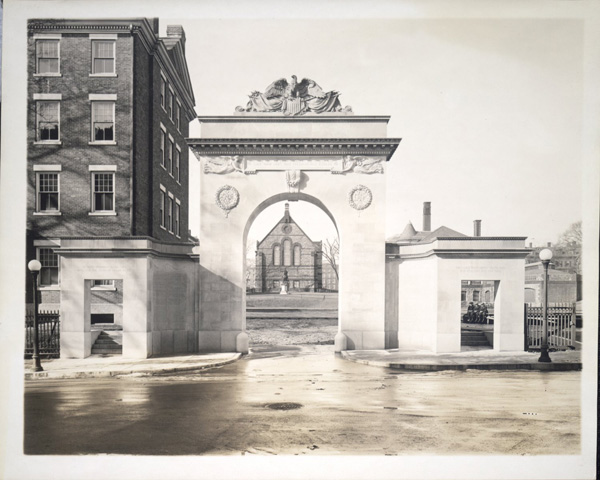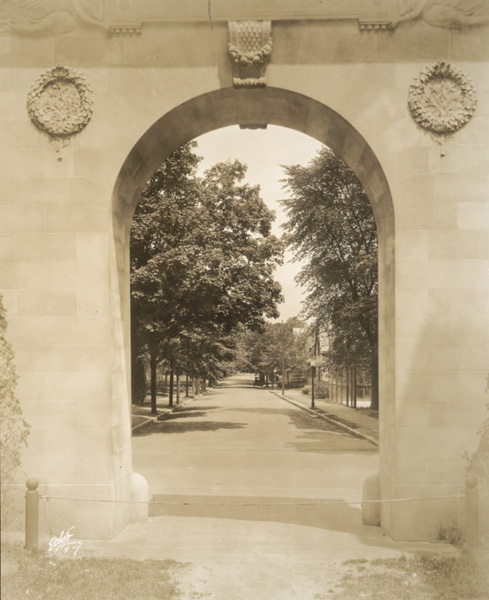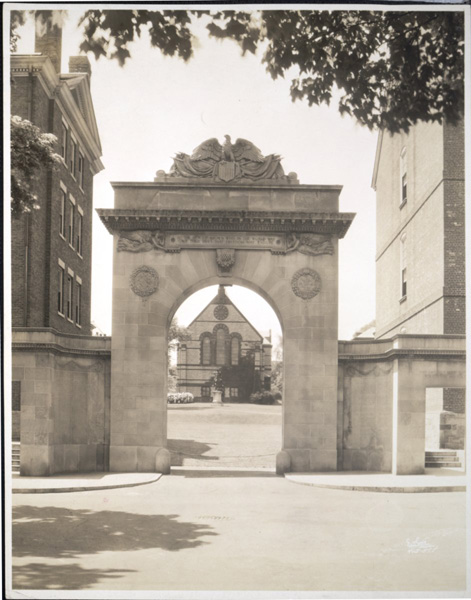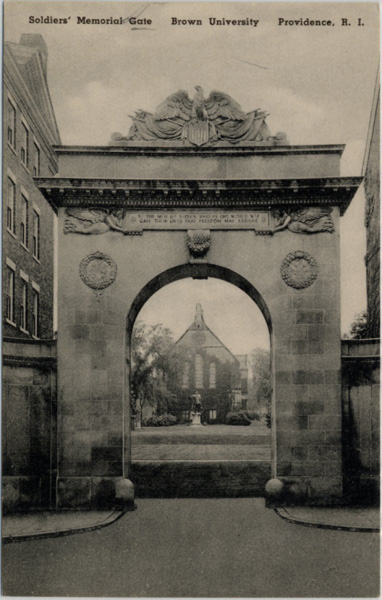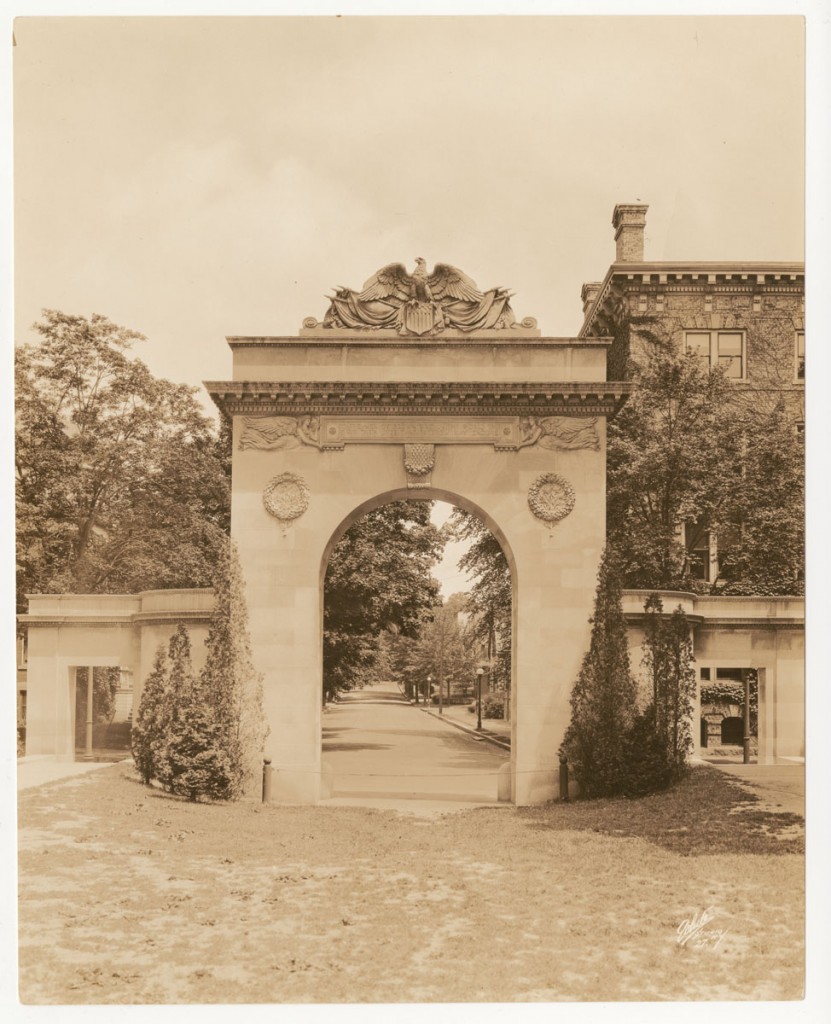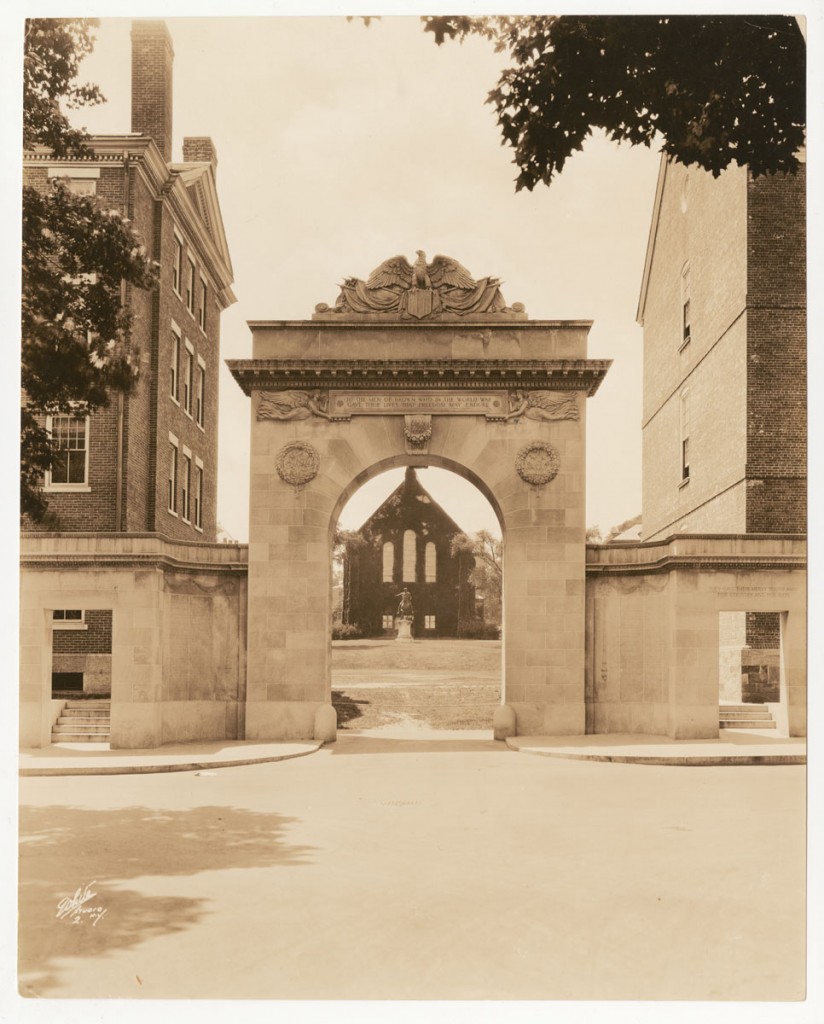“WHAT MEMORIAL SHALL WE BUILD TO OUR HONORED DEAD?” –William H.P Faunce[1. BUA. Topic Files. 1-E. WWI]
Brown was quick to consider ways in which to to memorialize its forty-one alumni and students, and one faculty member, who died in service. A bronze tablet, to be displayed in the vestibule of the John Hay Library, was initially considered. After a committee formed, a spacious memorial hall was envisioned. In the end the a Memorial Gate was agreed upon. “An Indiana Limestone arch is planned with three gates, one main gate for marching processions on festive occasions, the side gates for daily use. On the panels at either side are to be inscribed the names of the forty-two students and teachers who died. The whole structure will inculcate patriotism and loyalty for many generations of students.”[2. Ibid]
As plans progressed on the Soldiers Memorial Gate, Colonel G.A. Taylor (1901) traveled to France. On Memorial Day, 1919, at the American Cemetery in Chateau-roux-Indre, Colonel Taylor received wreaths from representatives of the French Government.[3. BUA. BAM, 20:2. July 1919. pg31] Colonel Taylor also visited the grave of Frank E. Starrett (1916), a member of the elite Lafayette Escadrille and the second student from Brown to have lost his life in the war. Colonel Taylor would later take a position with the Graves Registration Service of the American Army in France and also visit the grave sites of McLaughlin, Berriman, Rice, Miller and Eicke.[4. BUA. BAM, 20:7. February, 1920. pp127-129] That Spring, a memorial booklet Brown University in the War was published. The booklet contains a statement of the war work of the University; a directory of the military service of alumni, former students and undergraduates; and biographies of Brown men who died in service. [5. Thirteen Brown men were killed in action or died of wounds, 22 died of influenza-pneumonia or other illness, five were killed in accidents, and two died of unknown causes.]
By October of 1919, the Memorial Gate was fully imagined and modeled. Representing solidity, purity, and restraint, the design featured plain walls crowned with wreaths of oak leaves, which were given only to those who saved another’s life on the battlefield, symbolizing the unselfishness of the dead, and with laurel sprays signifying victory. The gate’s cost was estimated at $36,000[6. BUA. Annual Report of the President to the Corporation of Brown University. Providence, RI. 1919] and fundraising got under way.

On April 6th, 1921, the fourth anniversary of the entry of the United States into the First World War, the Soldiers Memorial Gate was dedicated to the Brown men who died in service. A great throng of people attended the ceremony, which began at Rockefeller Hall. After addresses by Major Charles P. Summerall, U.S.A. Commander of the First Division; Lieutenant Noble B. Judah, Jr. (1904); and Major Zinovi Pechkoff of the French Foreign Office, “Marseillaise” was played. The crowd then marched to the gate where it was formally presented to the University. Wreaths were laid, and a bugle sounding taps brought the ceremony to an end.[7. BUA. BAM, 21:10. May, 1921. p167]
The inscription in the center of the gate reads “To the men of Brown who in the World War, Gave their lives that freedom may endure.” On the left, from Ralph Waldo Emerson’s poem “Sacrifice,” ‘Tis man’s perdition to be safe, When for the truth he ought to die.” On the right, from Winifred Letts’s poem “The Spires of Oxford,” “They gave their merry youth away, For country and for God.”
Related Materials in the BDR
Although planning for Providence’s World War I Monument began in December of 1918, it would be over eight years before it was dedicated on November 11th, 1929, the eleventh anniversary of the Armistice. The monument honors the 220 Providence men that were killed in action, including several Brown Students and Alumni. The designer of the monument, Paul Philippe Cret, also designed Brown University’s campus plan and, along with Gavin Haddon, the Brown Stadium. Cret was awarded an honorary A.M. degree from Brown University in 1929.

